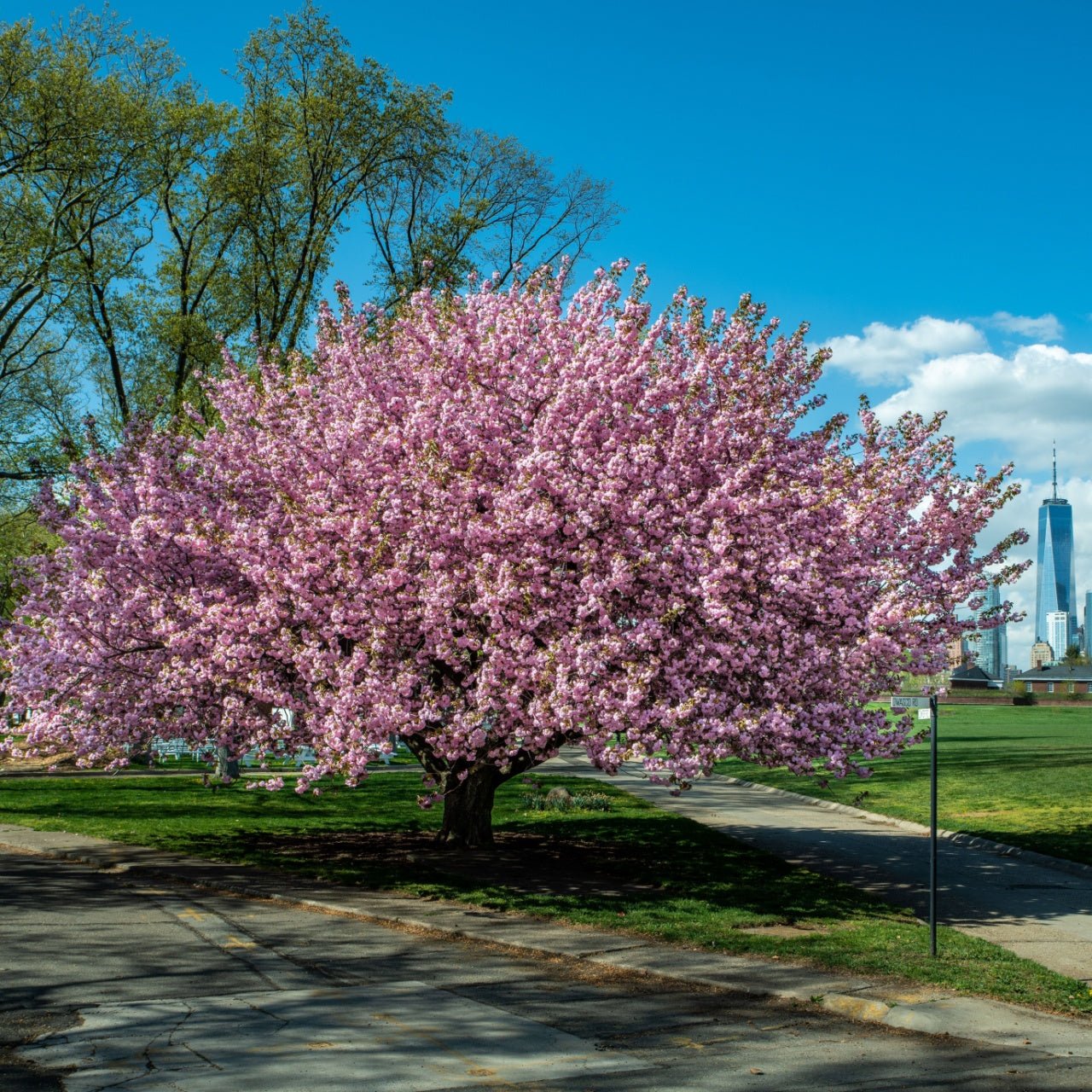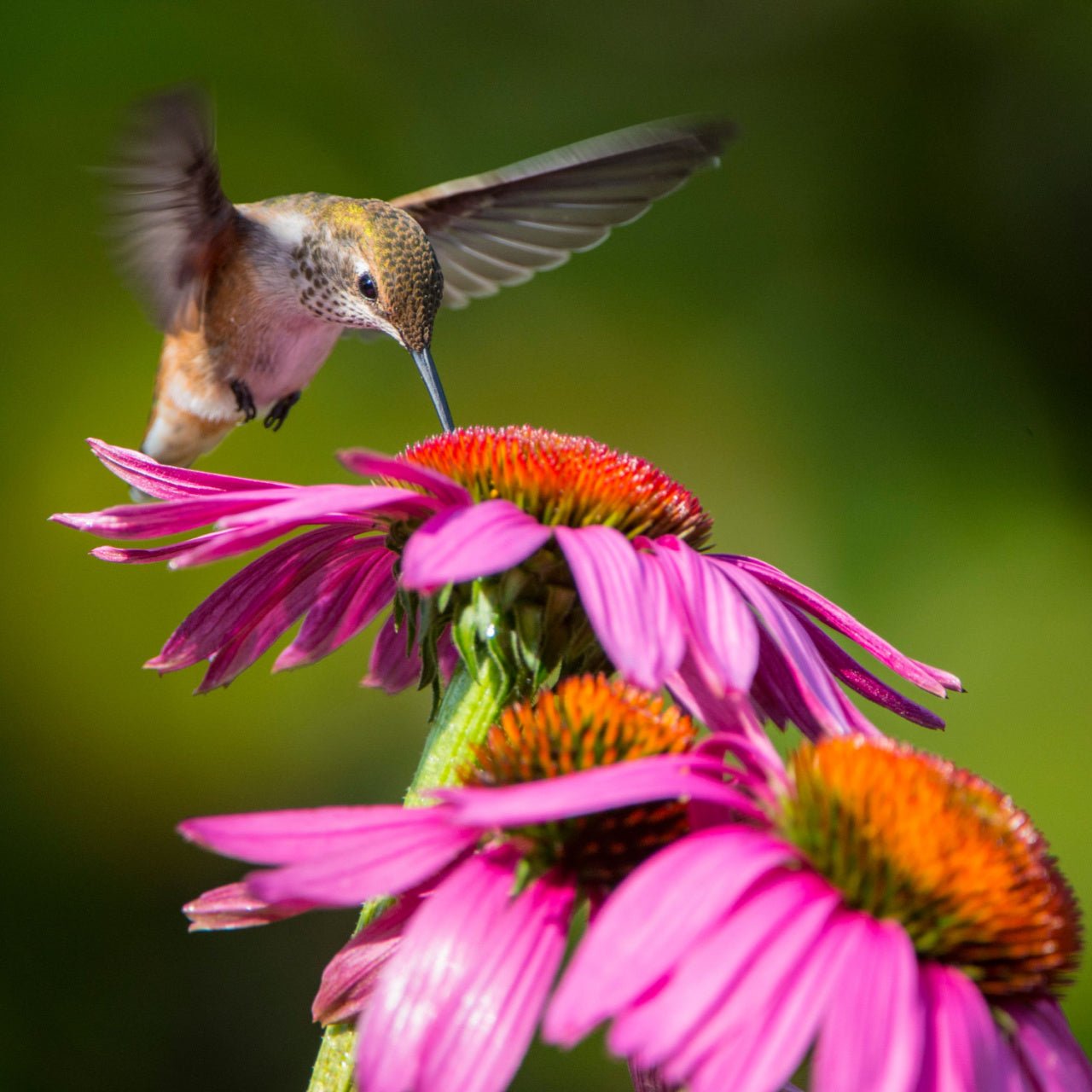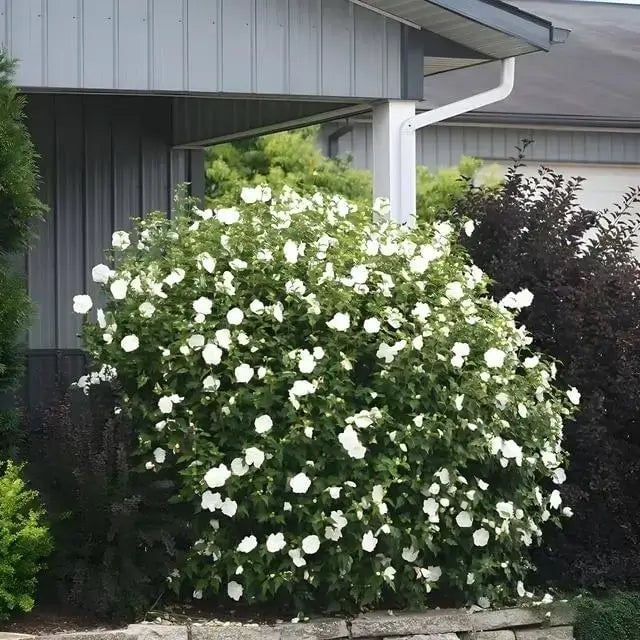

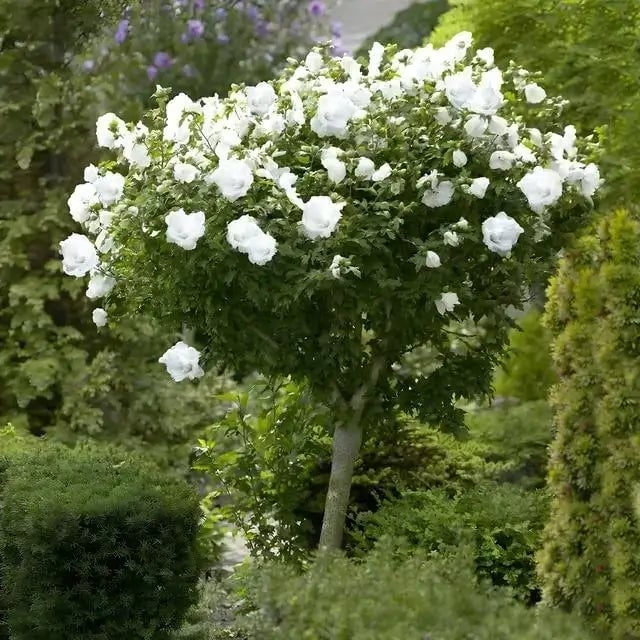

White Swamp Rose Mallow
Attracts butterflies and pollinators
Adds elegance to wet areas
Long-lasting summer flower display
Thrives in
ZONE 5ZONE 6ZONE 7ZONE 8ZONE 9This plant ships:
November 20251 Year Guarantee on all plants
White Swamp Rose Mallow - Hibiscus moscheutos
White Swamp Rose Mallows (Hibiscus moscheutos) are multi-stemmed, herbaceous, woody perennials that are native to the eastern United States and naturally grow along creek banks and wetlands. Some common cultivars of white are ‘Blue River II’ and ‘Snow Angel’ and the bright green foliage contrasts brilliantly with the stark white blooms.
These shrub-like perennials are fast growing with an upright habit reaching 7 ft in height with a spread of 5 ft. Due to their leggy nature, it is best to plant individuals in an area with shelter, as wind can damage these plants. The leaves of these shrubs are alternate, ovate, and a lush bright green in color.
Plant Details - White Swamp Rose Mallow
Family: Malvaceae
Hardiness Zones: 5 - 9
Light Requirement: Full sun
Water Needs: High
Height: 4 - 7 ft
Spread: 3 - 5 ft
Growth Rate: Fast
Bloom Time: Mid to late summer through early fall
Flower Color: Pure white or white with reddish-pink centers, depending on variety
Wildlife Value: Attracts bees, butterflies, and hummingbirds
The Latin name ‘moscheutos’ means ‘musk-scented’ and the flowers of the Swamp Rose Mallows indeed have a musky aroma. The flowers are pinwheel-like and huge, reaching up to 8 in in diameter. The center of the flower is often contrasting to the petals, creating an eye-catching feature. From the center, a strong staminal column emerges in a light yellow or creamy white. Each flower withers quickly after blooming however the flowering period persists for up to 1 month. Once pollinated, the seed capsules develop to be 1 in long.
White Swamp Rose Mallows look similar to a Hollyhock; however, they are not related. Interestingly, the flowers and leaves of these impressive shrubs are edible. As it is in the mallow family, it is mucilaginous and makes a wonderful addition to salads and soups. These shrubby plants can be planted in the wettest area of your garden where other plants are difficult to establish. It is stunning when planted along stream or pond banks. Another interesting component of white varieties of Swamp Rose Mallows is that they are more visible to pollinators at dusk and in the evening so they are ideal flowers for night pollinators.
Landscape Uses and Maintenance - White Swamp Rose Mallow
They prefer full to partial sun locations and consistently moist to wet soils that contain silt, loam, sand and organic material. These plants will bloom more fully in full sun locations which will also encourage them to be more disease resistant.
It is best practice to cut individuals back to ground level in autumn, since the flowers will appear on the new growth. They are pest- and disease-free and easy to grow.
Noteworthy Characteristics
Showy blooms, attractive to pollinators, grows in wet environments.
Plant these shrubs in your garden and enjoy incredibly impressive white blooms that give your garden a tropical ambience summer after summer. Shop for White Swamp Rose Mallow shrubs online at TN Nursery. For 68 years, we have served the landscaping industry and homeowners with specimen plants.
This Is How Your Plants Will Look upon Delivery

Bloom Season
Summer
Bloom/Foliage Color
White
Height at Maturity
Over 10 Feet
Care
White Swamp Rose Mallow thrives in moist, well-drained soil. Water often keeps the soil consistently damp, especially during dry spells. To promote new growth, fertilize in early spring and cut back dead stems in late winter.
Plant Reproduction
White Hibiscus spreads through seeds, cuttings, and root suckers
Plant bare-root shrubs during the more excellent spring or fall months, from November through April. Dig a hole twice as wide as the root system and slightly more profound than its height. Position the shrub so that the top of the roots is level with the ground, and put back the soil dug over the roots. Apply a 2-3 inch layer of mulch around the base to retain moisture and suppress weeds, ensuring the mulch does not touch the shrub's stem. Water regularly, especially during the first year, to establish strong roots. Prune shrubs as needed to promote healthy growth. In the spring, fertilize with a balanced, slow-release fertilizer suited to the specific needs of the shrub.
Shipping date depends on the date displayed and chosen when you order from the product's page.
We only accept returns on plants verified dead. If you think your plants have died, we offer a 1 year warranty, please use this File a Claim Link to verify dead plants and start with return warranty process.





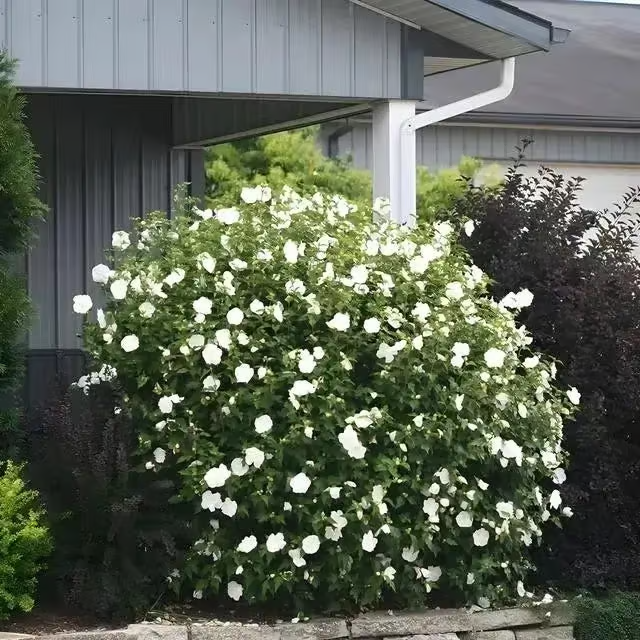
Stunning White Blooms:
The White Hibiscus features large, pristine white flowers that create a striking focal point in any garden.
Tropical Elegance:
Adds a touch of exotic charm to your landscape with its beautiful, showy blooms and lush green foliage.
Long Blooming Period:
Enjoy continuous blooms from summer to fall, providing ongoing color and interest throughout the growing season.
Low Maintenance:
This hardy plant thrives in various soil types and requires minimal care, making it an ideal choice for busy gardeners.
Caring Tips
How do I care for my White Swamp Rose Mallow?
Each box contains detailed care instructions and information about your product. But here's the basics.
Care Tips
White Swamp Rose Mallow thrives in moist, well-drained soil. Water often keeps the soil consistently damp, especially during dry spells. To promote new growth, fertilize in early spring and cut back dead stems in late winter.
Light Requirements
White Swamp Rose Mallow thrives in full sun to partial shade. It needs 6 hours of direct daylight daily for optimal growth and blooming but can tolerate some shade, particularly in hotter afternoons.
Hardy Planting Zones
5 • 6 • 7 • 8 • 9
Header
Use this content to share information about your store and products.
Frequently Asked Questions
How often should I water my plants?
How do I know if my plant is getting too much or too little sunlight?
What should I do to prepare my plants for winter?
What are the signs that my plant needs fertilizing?
How can I prevent pests from damaging my plants?
How do I choose the right plant for my climate zone?





